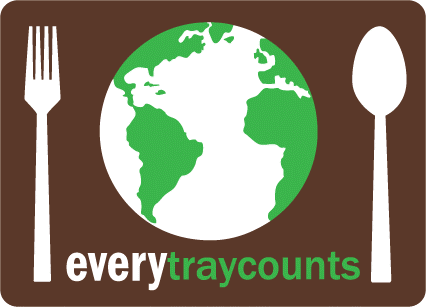The first task is to create a group of volunteers that includes parents, administrators, custodial and kitchen staff, teachers and teaching assistants, and any interested community members and groups. This is the evaluation stage. An action plan comes from this research. Once you have pulled together your initial volunteer group (keep in mind that this group will grow as the project grows), you are ready to evaluate the specifics in you community and school district. The first step is to get very clear about how you can most effectively proceed.
Establish Goals:
• A. Trays- Do you want to replace polystyrene trays with compostable or biodegradable trays?
• B. Food Waste- Do you want to compost food waste and compostable trays?
• C. Recycling- Do you have a recycling system? If not, do you want to include that?
• D. Liquids- Do you want to implement a liquids program?
For example, in both Chapel Hill and Durham we were able to bring a group together that were able to move quickly to answer these questions. Chapel Hill was able to commit to an exploration of the whole process, based on its food purchasing and budget structure. Durham, on the other hand, has different purchasing and budget restrictions. In Durham, we knew that we were gathering information, but not what we would be able to do with it immediately. In both cases we set up a timeline that included waste and trash audits, as well as meetings with the school administration and school employees. This is represented by the 2-circle model that we have shown. This is the best solution if you have the time and resources because it gives you all of the pertinent information that you need to bring food waste composting and the reuse/recycle and composting idea in the least amount of time. 
Another, and equally valid, solution is to begin to restructure the lunch room trash in ways that do not require a major overhaul of the current systems. These ideas include setting aside unopened, safe food for other students, as well as pouring liquids into a 5 gallon bucket instead of the trash can. In our two audits, we have found that over 30% of the trash weight was from liquids- milk and juice more specifically. Simply removing that weight and volume from your trash necessitates a review of your trash costs, and should result in lowering those costs. Please look under Chapel Hill and Durham for the Waste Audit results and you will see how much liquid is being moved around. Instead, you can simply put the liquid down the drain in one of the kitchen or lunch room drains. You will be saving on trash volume and weight, and saving gas as well. Click on Trash Terminators , a group from Chapel Hill, to read about their exploration of school waste.
As you can see, if you do not have all of the resources when you start, there are things that you can do to see results very quickly. As soon as possible, find out who and how the trash from the school is paid for. You will need this information eventually because it is important to know whether you can apply any savings to your future, larger goals. These goals may be to replace polystyrene trays, incorporate food waste composting, or both; some other possibilities may arise as well. Take a look at the active examples we show in our NC Schools In Action: Following Through page.
